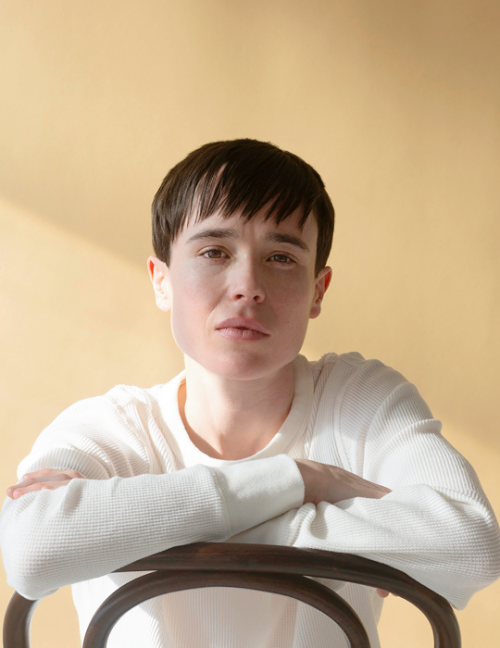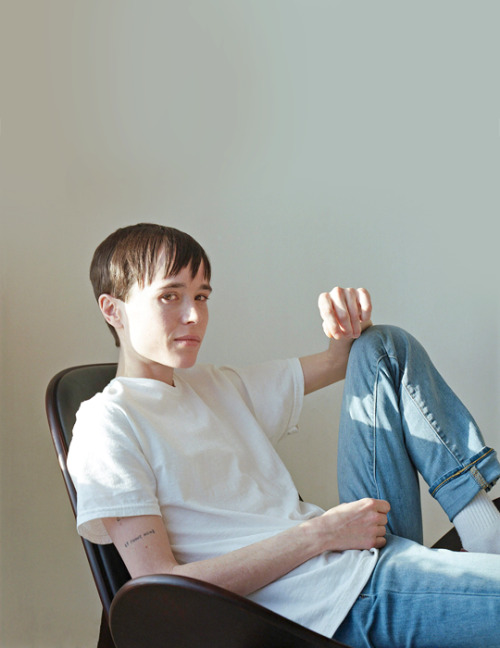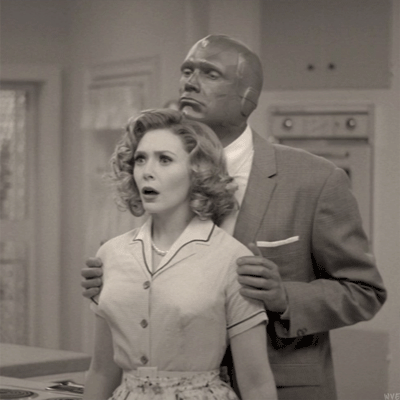Many Of The Political Attacks On Trans People—whether It Is A Mandate That Bathroom Use Be Determined



Many of the political attacks on trans people—whether it is a mandate that bathroom use be determined by birth sex, a blanket ban on medical interventions for trans kids or the suggestion that trans men are simply wayward women beguiled by male privilege—carry the same subtext: that trans people are mistaken about who they are. “We know who we are,” Page says. “People cling to these firm ideas [about gender] because it makes people feel safe. But if we could just celebrate all the wonderful complexities of people, the world would be such a better place.”
Page was attracted to the role of Vanya in The Umbrella Academy because—in the first season, released in 2019—Vanya is crushed by self-loathing, believing herself to be the only ordinary sibling in an extraordinary family. The character can barely summon the courage to move through the world. “I related to how much Vanya was closed off,” Page says. Now on set filming the third season, co-workers have seen a change in the actor. “It seems like there’s a tremendous weight off his shoulders, a feeling of comfort,” says showrunner Steve Blackman. “There’s a lightness, a lot more smiling.” For Page, returning to set has been validating, if awkward at times. Yes, people accidentally use the wrong pronouns—“It’s going to be an adjustment,” Page says—but co-workers also see and acknowledge him.
Whatever challenges might lie ahead, Page seems exuberant about playing a new spectrum of roles. “I’m really excited to act, now that I’m fully who I am, in this body,” Page says. “No matter the challenges and difficult moments of this, nothing amounts to getting to feel how I feel now.” This includes having short hair again. During the interview, Page keeps rearranging strands on his forehead. It took a long time for him to return to the barber’s chair and ask to cut it short, but he got there. And how did that haircut feel?
Page tears up again, then smiles. “I just could not have enjoyed it more,” he says.
ELLIOT PAGE for TIME Magazine › 2021 interview by Katy Steinmetz, photography by Wynne Neilly
More Posts from Dynamic-light-scattering and Others

2020 March 25
Star Forming Region S106 Image Credit: NASA, ESA, Hubble Legacy Archive; Processing & Copyright: Utkarsh Mishra
Explanation: Massive star IRS 4 is beginning to spread its wings. Born only about 100,000 years ago, material streaming out from this newborn star has formed the nebula dubbed Sharpless 2-106 Nebula (S106), featured here. A large disk of dust and gas orbiting Infrared Source 4 (IRS 4), visible in brown near the image center, gives the nebula an hourglass or butterfly shape. S106 gas near IRS 4 acts as an emission nebula as it emits light after being ionized, while dust far from IRS 4 reflects light from the central star and so acts as a reflection nebula. Detailed inspection of a relevant infrared image of S106 reveal hundreds of low-mass brown dwarf stars lurking in the nebula’s gas. S106 spans about 2 light-years and lies about 2000 light-years away toward the constellation of the Swan (Cygnus).
∞ Source: apod.nasa.gov/apod/ap200325.html
Get Ready To Launch America!

A new era of human spaceflight is about to begin. American astronauts will once again launch on an American rocket from American soil to the International Space Station as part of our Commercial Crew Program! NASA astronauts Bob Behnken and Doug Hurley will fly on SpaceX’s Crew Dragon spacecraft, lifting off on a Falcon 9 rocket at 4:32 p.m. EDT May 27, from Kennedy Space Center in Florida, for an extended stay at the space station for the Demo-2 mission.

As the final flight test for SpaceX, this mission will validate the company’s crew transportation system, including the launch pad, rocket, spacecraft and operational capabilities. This also will be the first time NASA astronauts will test the spacecraft systems in orbit.

Behnken and Hurley were among the first astronauts to begin working and training on SpaceX’s next-generation human space vehicle and were selected for their extensive test pilot and flight experience, including several missions on the space shuttle.

Behnken will be the joint operations commander for the mission, responsible for activities such as rendezvous, docking and undocking, as well as Demo-2 activities while the spacecraft is docked to the space station.

Hurley will be the spacecraft commander for Demo-2, responsible for activities such as launch, landing and recovery.

Lifting off from Launch Pad 39A atop a specially instrumented Falcon 9 rocket, Crew Dragon will accelerate its two passengers to approximately 17,000 mph and put it on an intercept course with the International Space Station. In about 24 hours, Crew Dragon will be in position to rendezvous and dock with the space station. The spacecraft is designed to do this autonomously but astronauts aboard the spacecraft and the station will be diligently monitoring approach and docking and can take control of the spacecraft if necessary.

The Demo-2 mission will be the final major step before our Commercial Crew Program certifies Crew Dragon for operational, long-duration missions to the space station. This certification and regular operation of Crew Dragon will enable NASA to continue the important research and technology investigations taking place onboard the station, which benefits people on Earth and lays the groundwork for future exploration of the Moon and Mars starting with the agency’s Artemis program, which will land the first woman and the next man on the lunar surface in 2024.
Get excited and follow along on social media using the hashtag #LaunchAmerica!
Make sure to follow us on Tumblr for your regular dose of space: http://nasa.tumblr.com.








Birth of Captain Marvel;




CAPTAIN MARVEL | POST CREDITS
Clint: [a straight man] why are all the hot girls lesbians?
Carol: [a lesbian] why are all the hot girls straight?
Wanda: [a straight woman] why are all the hot guys gay?
Bucky: [a gay man] why are all the hot guys straight?
Tony: [a panicky bisexual]WHY ARE ALL THE HOT PEOPLE TAKEN?
Wade: [a excited pansexual] Everyone is hot, what do I do?
Vision: [a robot] what?




Brie Larson said I know my worth! —


H E I G H T D I F F E R E N C E







Marvel’s Avengers: Endgame became the top-grossing film of all-time at the worldwide box office
-
 creaturebeeing liked this · 1 month ago
creaturebeeing liked this · 1 month ago -
 middlefade liked this · 1 month ago
middlefade liked this · 1 month ago -
 mothcryptid1998 liked this · 1 month ago
mothcryptid1998 liked this · 1 month ago -
 fvckw4d reblogged this · 2 months ago
fvckw4d reblogged this · 2 months ago -
 fvckw4d liked this · 2 months ago
fvckw4d liked this · 2 months ago -
 thecrimsonroses-blog liked this · 2 months ago
thecrimsonroses-blog liked this · 2 months ago -
 kiwipit liked this · 3 months ago
kiwipit liked this · 3 months ago -
 fencethetrader liked this · 4 months ago
fencethetrader liked this · 4 months ago -
 cecropiathemoth liked this · 4 months ago
cecropiathemoth liked this · 4 months ago -
 jjisqueen liked this · 4 months ago
jjisqueen liked this · 4 months ago -
 underthemistletoe28 reblogged this · 5 months ago
underthemistletoe28 reblogged this · 5 months ago -
 underthemistletoe28 liked this · 5 months ago
underthemistletoe28 liked this · 5 months ago -
 nerve-balloon reblogged this · 6 months ago
nerve-balloon reblogged this · 6 months ago -
 diangeladest-blog liked this · 7 months ago
diangeladest-blog liked this · 7 months ago -
 uncle-dog-irl liked this · 7 months ago
uncle-dog-irl liked this · 7 months ago -
 geeky-librarian4678 reblogged this · 8 months ago
geeky-librarian4678 reblogged this · 8 months ago -
 pansexualflowr reblogged this · 8 months ago
pansexualflowr reblogged this · 8 months ago -
 ashewindrider liked this · 9 months ago
ashewindrider liked this · 9 months ago -
 yukamochida98 liked this · 9 months ago
yukamochida98 liked this · 9 months ago -
 yanderehoes liked this · 9 months ago
yanderehoes liked this · 9 months ago -
 larckla reblogged this · 10 months ago
larckla reblogged this · 10 months ago -
 ehlytriesagain liked this · 10 months ago
ehlytriesagain liked this · 10 months ago -
 tryingsomething2024 reblogged this · 10 months ago
tryingsomething2024 reblogged this · 10 months ago -
 fastofthekillones liked this · 10 months ago
fastofthekillones liked this · 10 months ago -
 exoticjamaicanarmy liked this · 10 months ago
exoticjamaicanarmy liked this · 10 months ago -
 ahhhhhhh17 liked this · 10 months ago
ahhhhhhh17 liked this · 10 months ago -
 grevere liked this · 10 months ago
grevere liked this · 10 months ago -
 cmdthenerd liked this · 11 months ago
cmdthenerd liked this · 11 months ago -
 hagelliot reblogged this · 1 year ago
hagelliot reblogged this · 1 year ago -
 olliemcxi liked this · 1 year ago
olliemcxi liked this · 1 year ago -
 styxxus liked this · 1 year ago
styxxus liked this · 1 year ago -
 weird-girl101 liked this · 1 year ago
weird-girl101 liked this · 1 year ago -
 purplepri reblogged this · 1 year ago
purplepri reblogged this · 1 year ago -
 purplepri liked this · 1 year ago
purplepri liked this · 1 year ago -
 gothgleek reblogged this · 1 year ago
gothgleek reblogged this · 1 year ago -
 the-other-engineer-who-cant liked this · 1 year ago
the-other-engineer-who-cant liked this · 1 year ago -
 amethystunarmed reblogged this · 1 year ago
amethystunarmed reblogged this · 1 year ago -
 amethystunarmed liked this · 1 year ago
amethystunarmed liked this · 1 year ago -
 aro-ace-from-outer-space22 liked this · 1 year ago
aro-ace-from-outer-space22 liked this · 1 year ago -
 pruplemonkeydishwasher liked this · 1 year ago
pruplemonkeydishwasher liked this · 1 year ago -
 zuripolako reblogged this · 1 year ago
zuripolako reblogged this · 1 year ago -
 zuripolako liked this · 1 year ago
zuripolako liked this · 1 year ago -
 fallen-starr reblogged this · 1 year ago
fallen-starr reblogged this · 1 year ago -
 fallen-starr liked this · 1 year ago
fallen-starr liked this · 1 year ago -
 thisisgettingdifficult reblogged this · 1 year ago
thisisgettingdifficult reblogged this · 1 year ago -
 somepoetryshit liked this · 1 year ago
somepoetryshit liked this · 1 year ago -
 cursed-lizard liked this · 1 year ago
cursed-lizard liked this · 1 year ago



